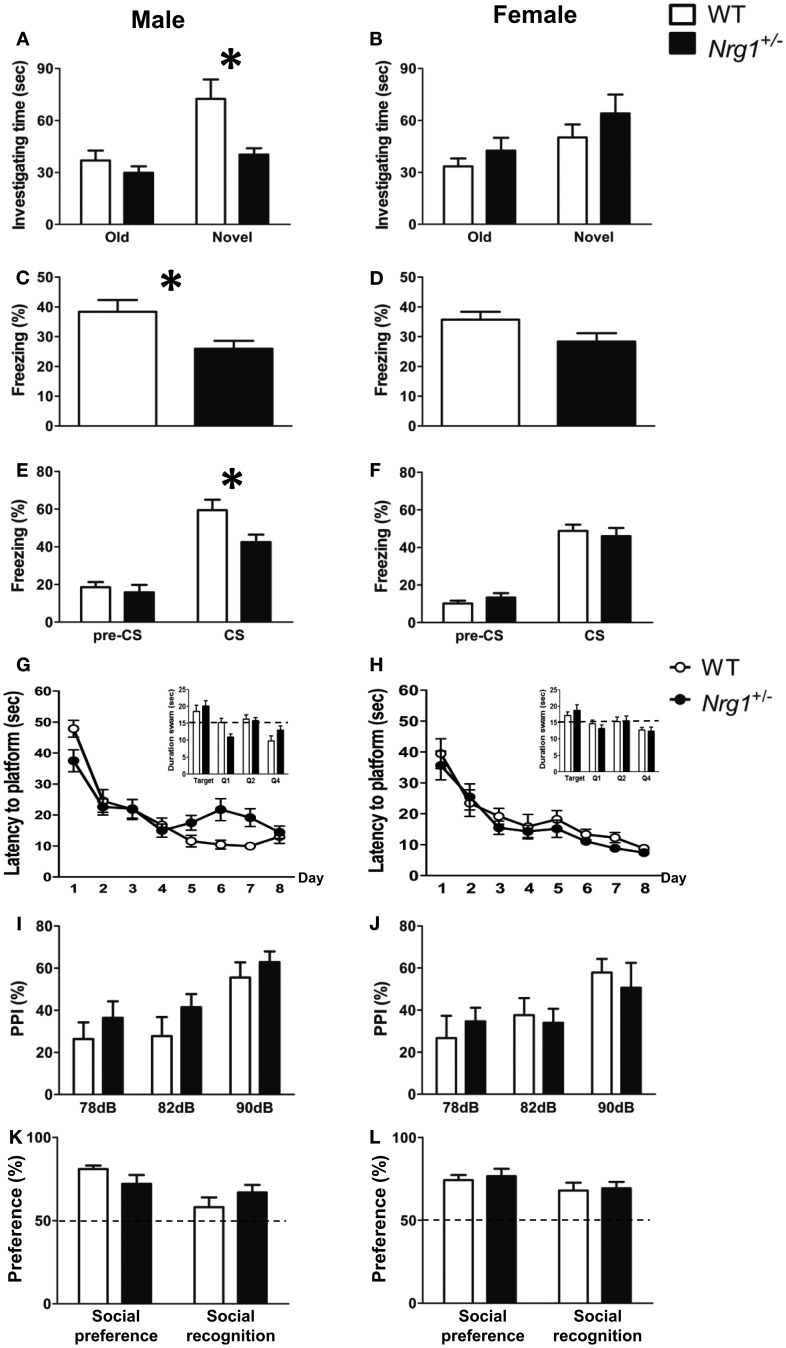Figure 2.
The cognitive functions (mean + s.e.m.) of both male and female TMc-Nrg1+/− mutant mice (black bars) and their wild-type littermate controls (WT, white bars) were evaluated in the Experiment 1 of this study. (A,B) In the object recognition task, a reduction in investigation time (s) of the novel object was observed in male, but not female, TMc-Nrg1+/− mice. (C,D) In the contextual fear conditioning task, a reduction in freezing time percentage was observed in male, but not female, TMc-Nrg1+/− mice. (E,F) In the cued fear conditioning task, a reduction in freezing time percentage (%) was found in male, but not female, TMc-Nrg1+/− mice. In contrast, no significant genotype-dependent differences were found in the Morris water maze, prepulse inhibition task, or the social task in either males (G,I,K) or females (H,J,L), respectively. Dash lines indicate chance level. *P < 0.05 between two genotypes.

